What is fabric paint made of? Fabric paint has always been so interesting to me – but is it actually paint? Is it really ink? And what is it made of? I recently acquired some lovely wingback chairs that a neighbor was getting rid of, so I thought it would be best to find out what fabric paint is made of, and if it differs from brand to brand. That way I can get the best result for my particular type of fabric and project.
Fabric paint is a dye-like paint that has binding agents added to increase its flexibility and durability. Depending on the desired opacity, it can be thicker or thinner than acrylic paint.
But there’s actually a lot more to it than that – below I’ll cover what makes fabric paint unique, whether or not you have to set fabric paint with heat, and if fabric paint and acrylic paint are the same. I’ll also cover the differences I noticed between testing all of these paints on a few different materials. Also, though I’ll be mentioning a lot of brands in this post, I’m not being sponsored to say anything and all opinions are my own.
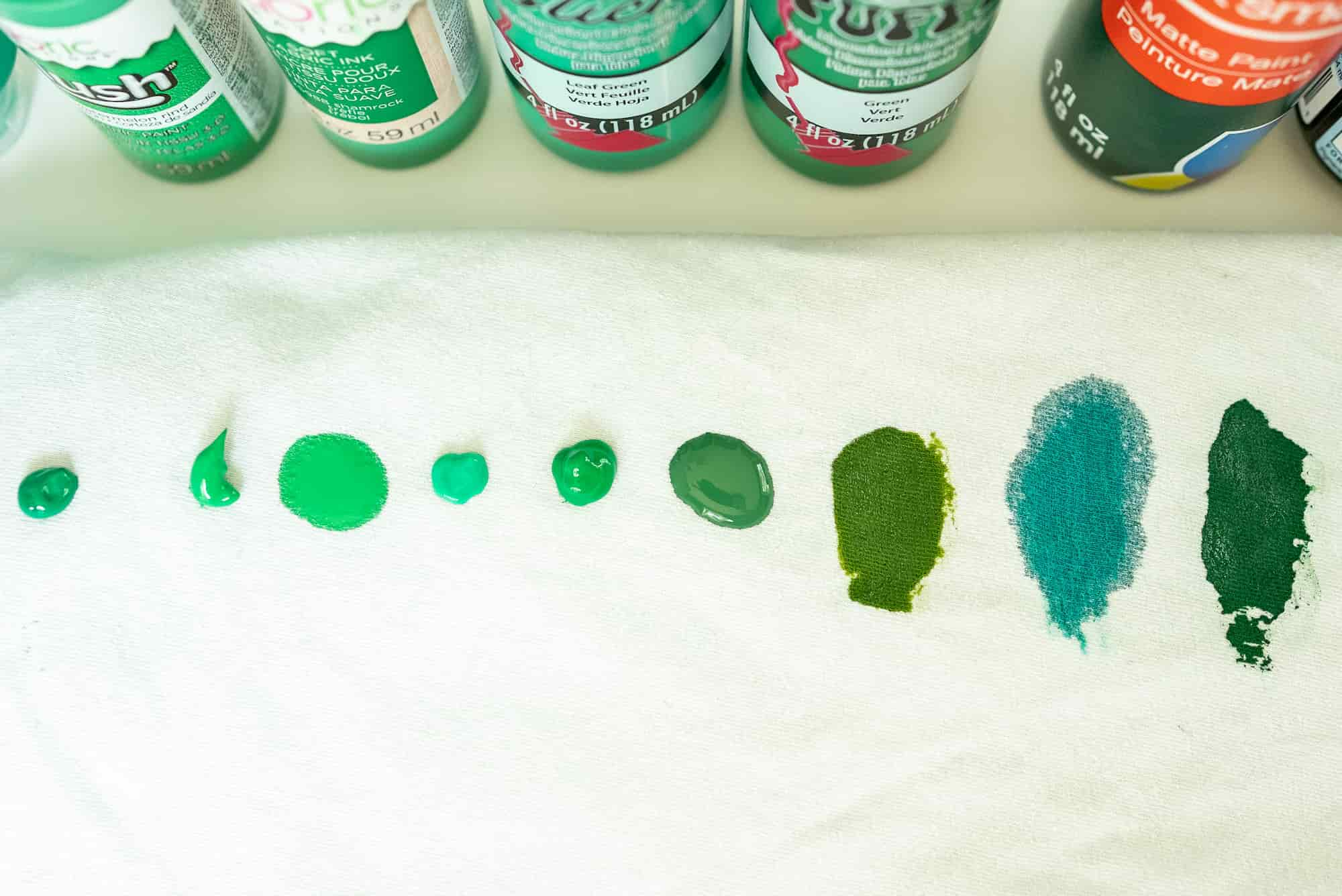
What Makes Fabric Paint Unique
Most fabric paint companies are surprisingly secretive about the ingredients of their paints – I called a ton of different manufacturers and none of them would share even the basic details of ingredients in their product (which I actually found pretty alarming considering I was just asking for basic categories of ingredients, not a specific formulation ingredient list. What if I had been inquiring because of an allergy or sensitivity?).
Thankfully, all my questions were answered when I was able to speak with Alex in the R&D department at Jacquard Products. Alex was SO incredibly helpful, friendly, and kind – he explained that fabric paint has a few different properties that makes it unique:
- Fabric paint can be either thinner or thicker than acrylic paint, depending on the desired opacity
- The rheology of the fabric paint can also differ based on it’s indended usage (think of rheology as a more in depth version of viscosity that works better for soft-solids)
- There are essentially two types of fabric paint – those that stay on top of the fabric, and those that penetrate into the fibers. The fabric that stays on top gives an opaque finish, and those that penetrate into the fibers gives a more translucent finish
- If you’re looking for a super soft finish, you’ll want to go with a penetrating, translucent option (like Jacquard’s Dye-Na-Flow Line)
- If you’re looking for a super opaque finish, you’ll want to go with a fabric paint that sits on top of the fibers (Like Jacquard’s Neopaque Line)
Do You Have To Heat or Set Fabric Paint?
Alex also let me know that the binding agents in fabric paint act a lot like resin, so for the fabric paint to cure, you’ll need to heat it up to seal it. The heating process links the polymer to keep the paint and fabric’s bond sturdy, even if you launder it.
If you are working on a project that won’t allow you to use heat to set the paint, know that it may be more likely to transfer to skin or clothing.
Since I was thinking of using these paints on a chair and heat was probably out of the question, I looked for another option. Thankfully, Jacquard has a product called Airfix that allows you to still seal the paint without heat. I’ve also heard good things about soft wax, which you can pick up at Home Depot.
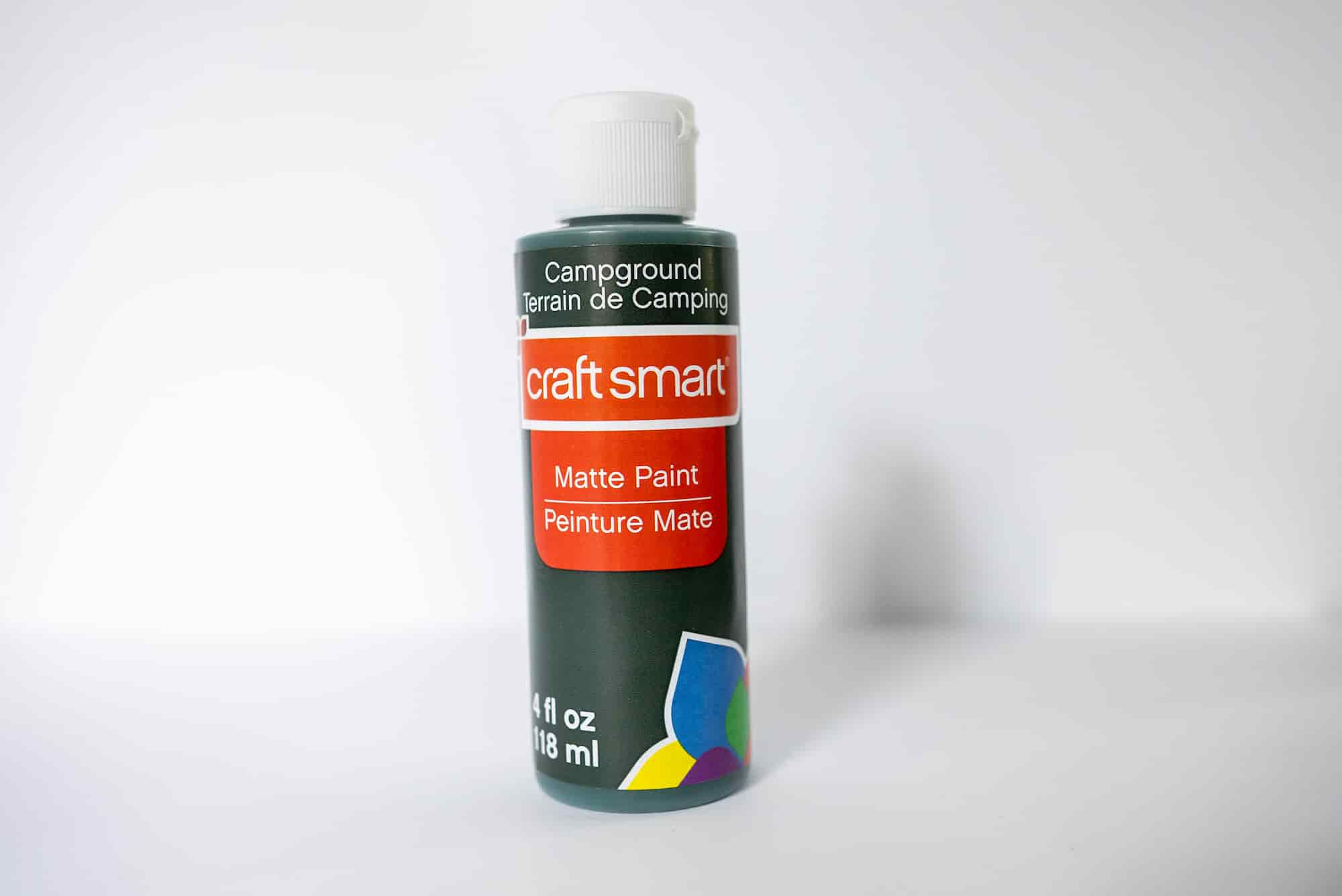
Is Fabric Paint The Same As Acrylic?
Fabric Paint and Acrylic paint actually have a lot in common – it’s basically just the binding agents that make them different. Acrylic paints use a binder too, but it’s a more brittle version than fabric paints.
That makes a lot of sense, since many tutorials for painting fabric online use a regular acrylic paint and a textile medium (that acts as the binder). Of course, it likely won’t work as well as something formulated specifically to be used on fabric, but it opens up a huge array of colors – acrylic paint comes in basically every hue you can think of.
What’s The Difference Between Fabric Paint, Dye, and Ink?
There are a TON of products on the market designed to help you change the color of fabric. In short, dye soaks into the fabric, while paint tends to sit on top…but there’s more to the answer than that.
Fabric Dye changes the color of your fabric without changing the texture by combining dye with mordants to help them adhere to the fabric. Nearly all dyes these days are synthetic, but you can definitely still purchase plant, animal, or mineral-based dyes.
Fabric Ink, on the other hand, changes the color of your fabric while only very slightly changing the texture (depending on the type of ink). Sometimes, fabric inks are alcohol-based, and other times they’re acrylic-based. I like to think of them as the spectrum between a true dye and a true paint.
Fabric Paint, which is usually acrylic paint mixed with a bonding agent, usually changes the texture of your fabric – though it really depends on the formulation and amount applied.
PS: If you’re enjoying this post so far, take a look at this gem, where I break down my process for choosing the CUTEST throw pillows for your bed.
What Is Fabric Paint Made Of?
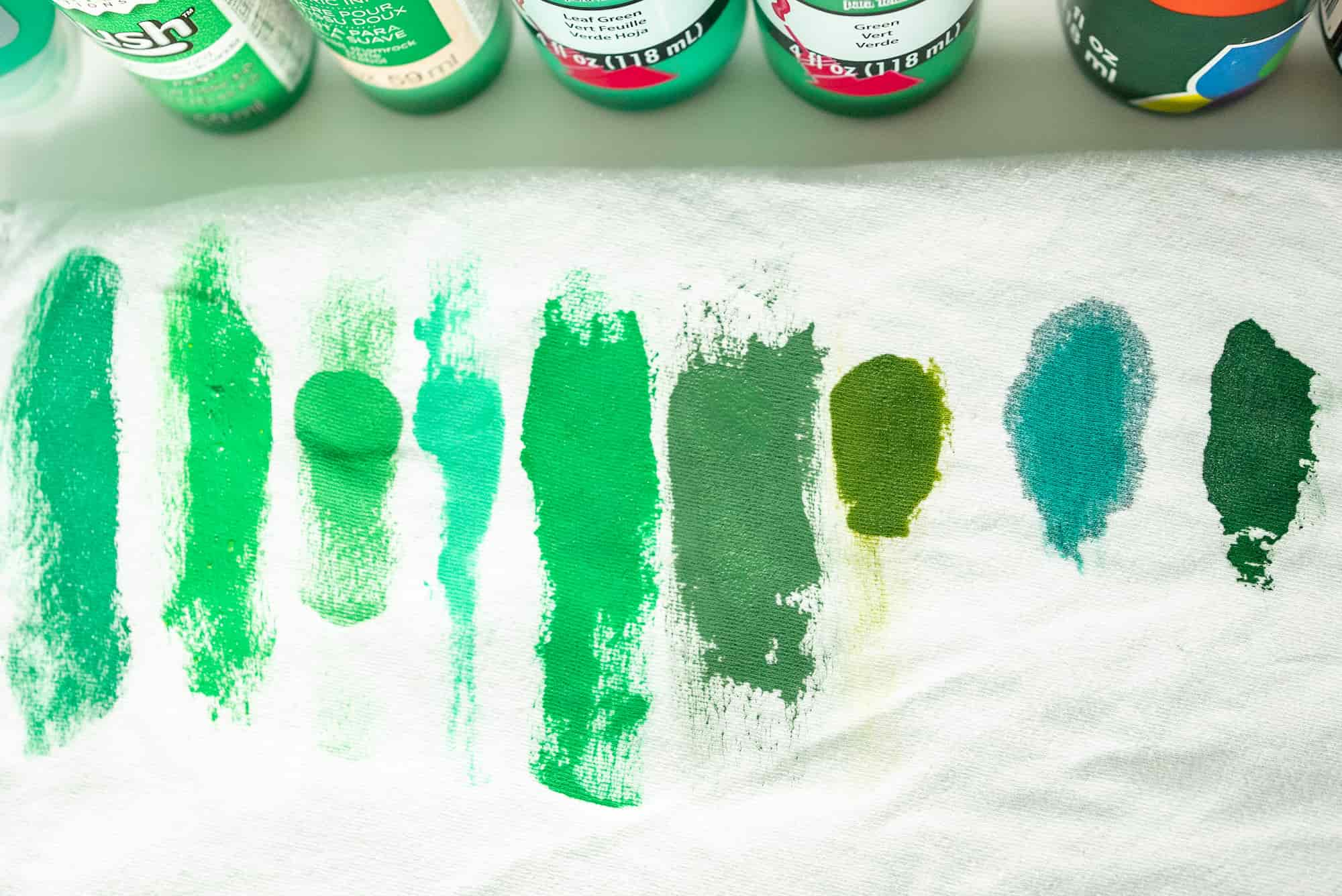
From left to right, imagin8Fabric Paint, Fabric Creations Plush 3-D Fabric Paint, Fabric Creations Soft Fabric Ink, Tulip Slick Dimensional Fabric Paint, Tulip Puffy Dimensional Fabric Paint, Craft Smart Matte Acrylic Paint + Textile Medium, Jacquard Textile Color, Jacquard Dye-na-flow, Jacquard Neopaque.
Fabric Paints Available At Michaels – Impressions
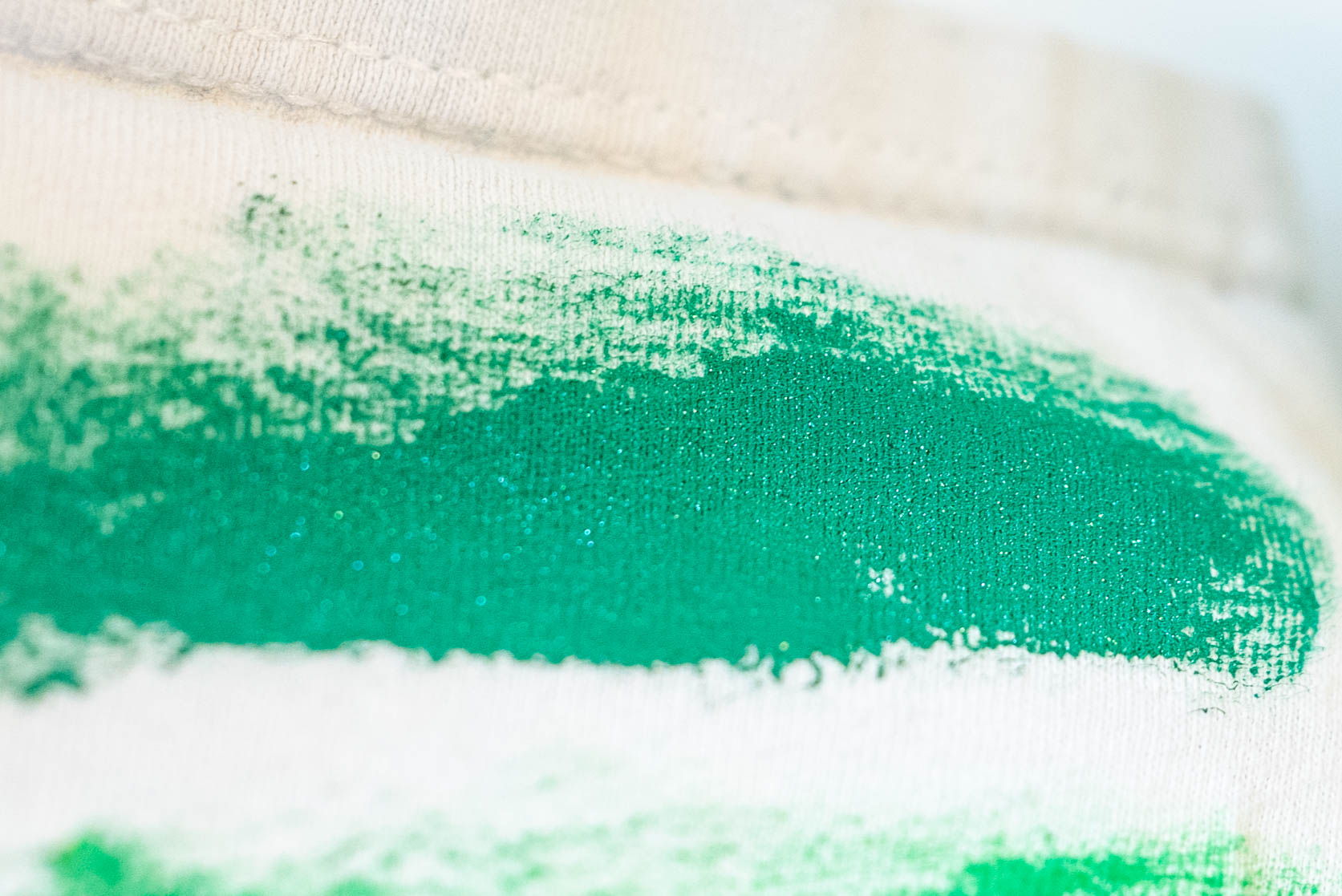
imagin8 Fabric Paint
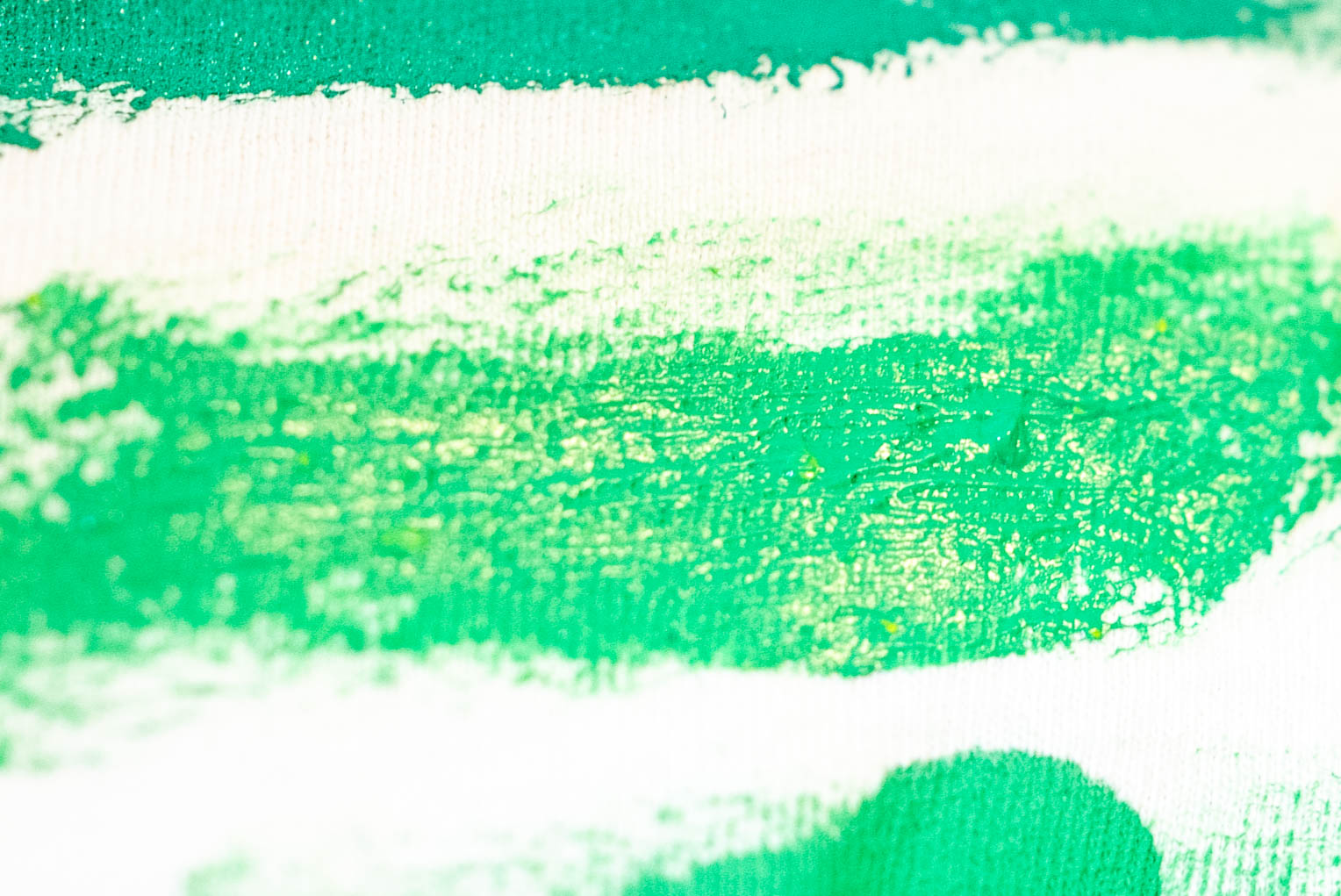
Fabric Creations Plush 3-D Fabric Paint
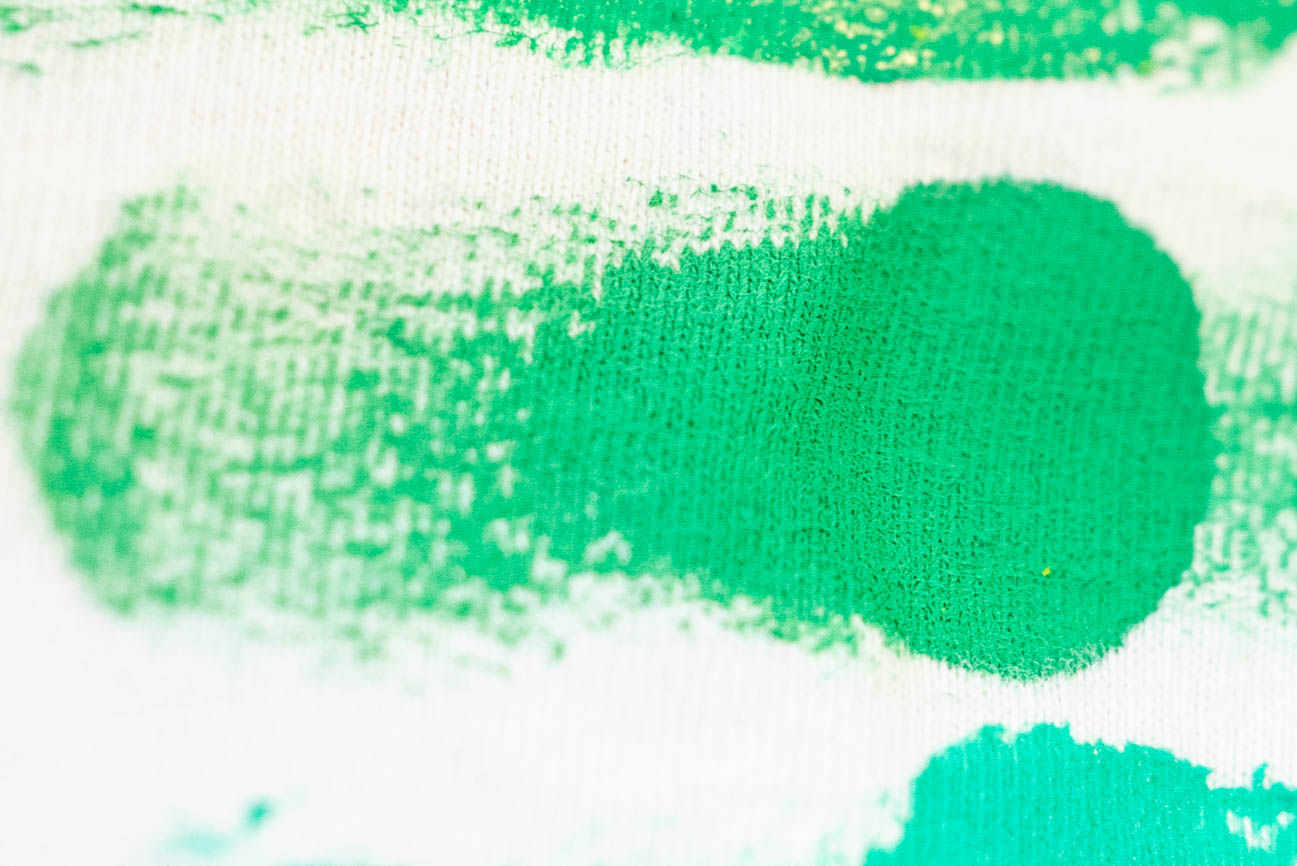
Fabric Creations Soft Fabric Ink
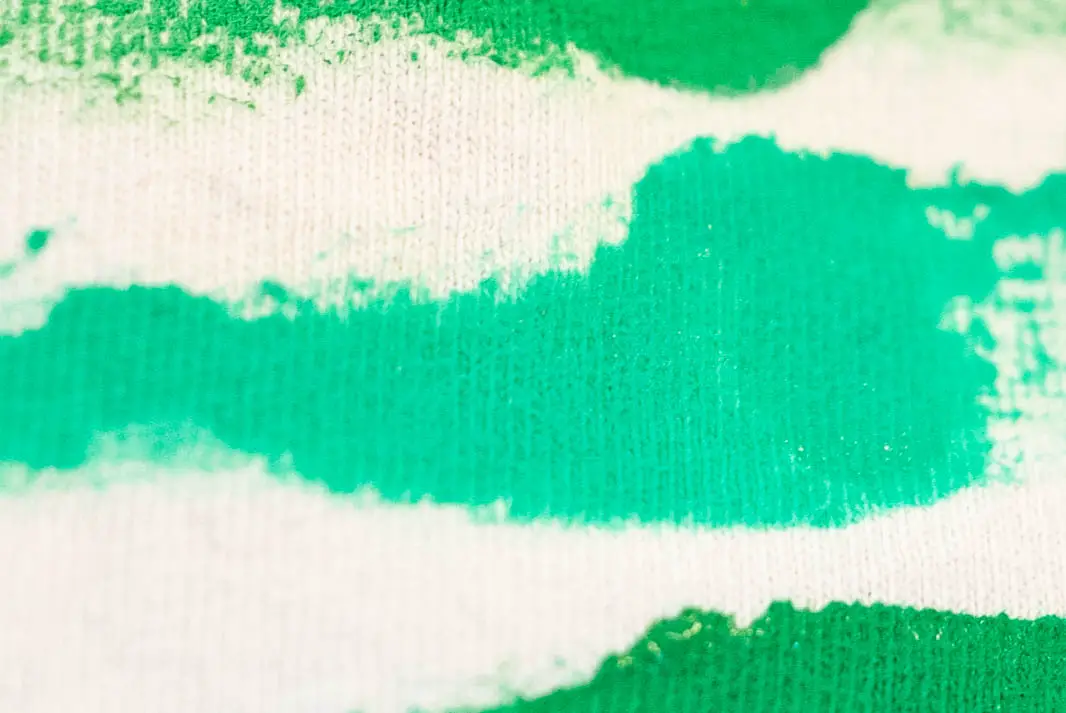
Tulip Slick Dimensional Fabric Paint
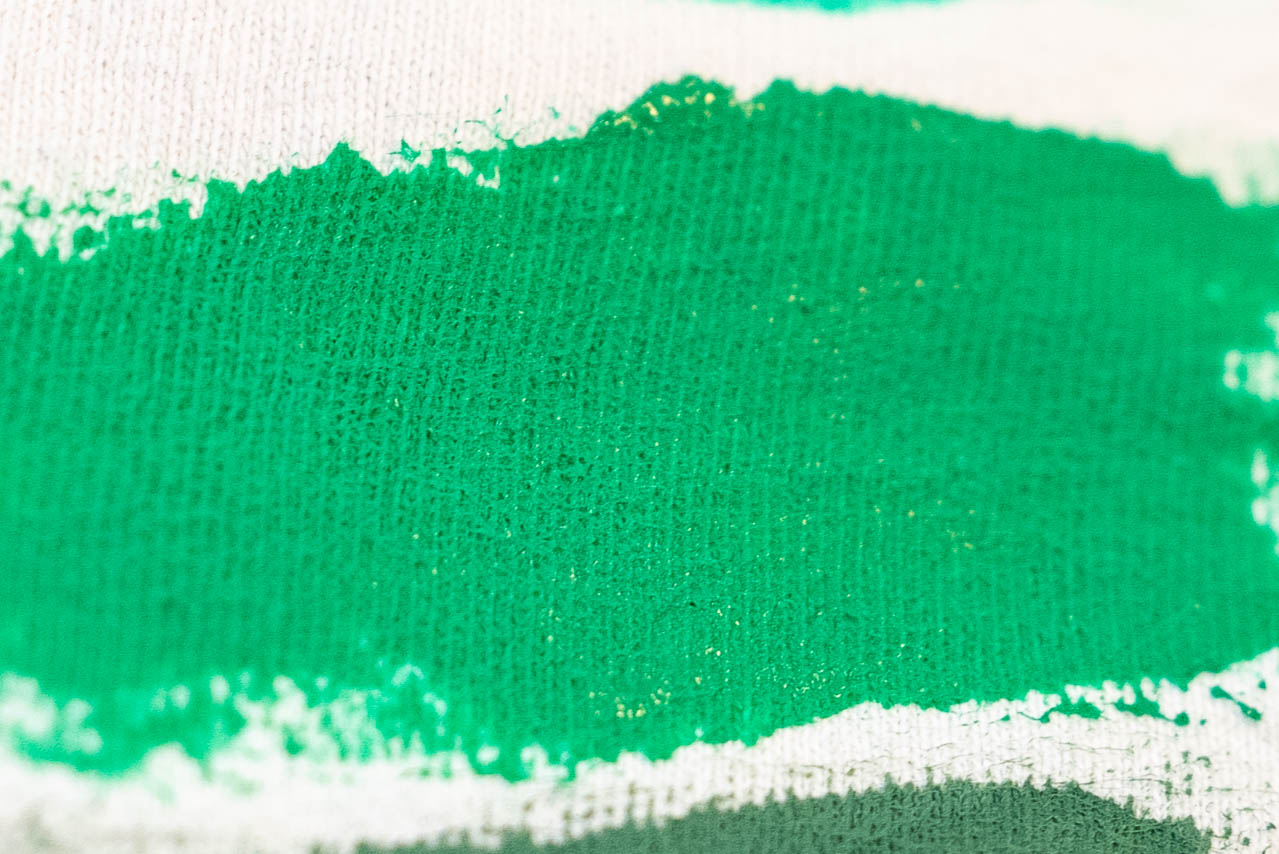
Tulip Puffy Dimensional Fabric Paint
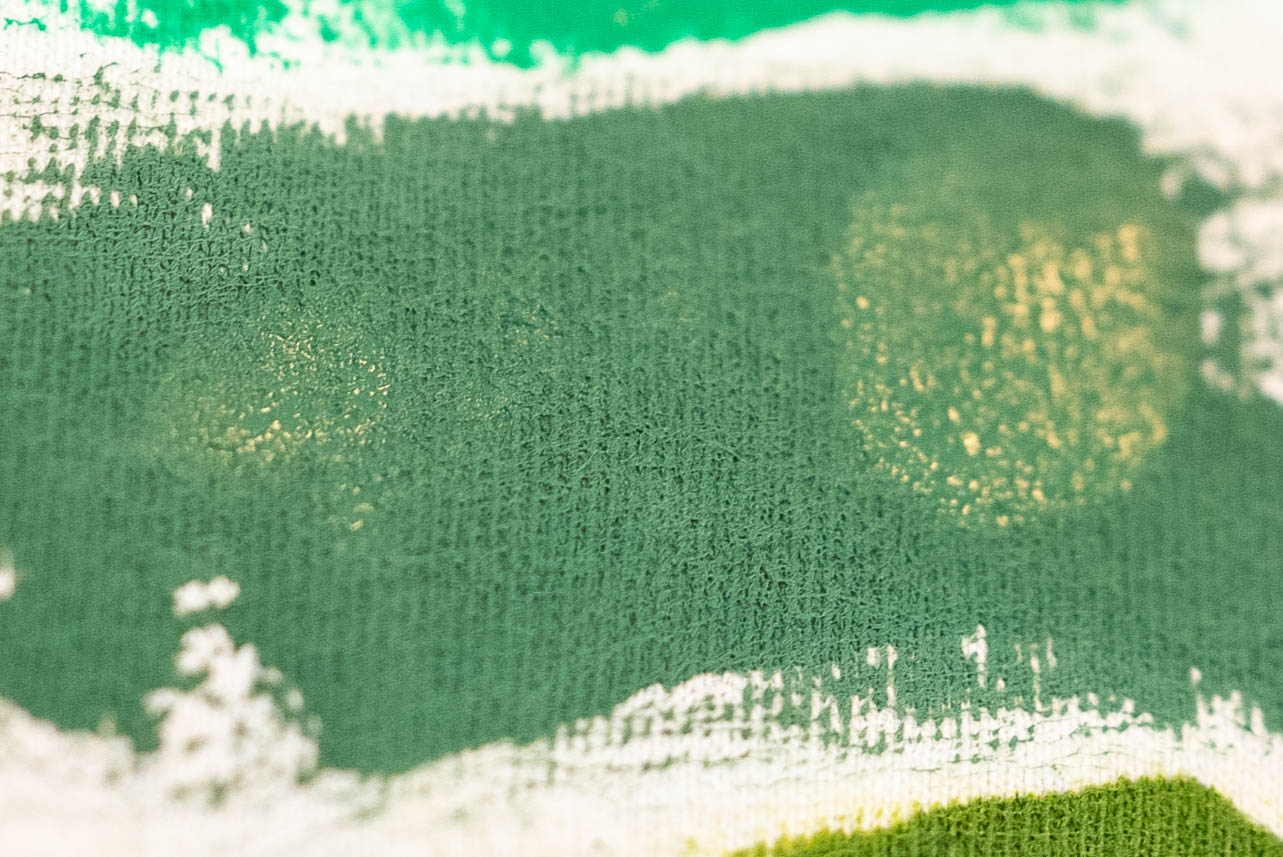
Craft Smart Matte Arcylic Paint + Textile Medium
Because all the brands (besides Jacquard) were so secretive about what makes a fabric paint different from acrylic or latex paint, I decided to test things out for myself. I made a stop at Michaels to pick up everything but the Jacquard products, and to my local professional art supply store for the Jacquard products.
I noticed that anything with the word ‘ink’ in it seemed to soak through the fibers really well, but they also had a more translucent coloration. I can’t confirm (since most companies wouldn’t talk to me about specifics), but I would guess there is probably a higher amount of alcohol in the ink-like paints.
Anything with the word ‘dimensional’ or ‘3-D’ seemed to sit on top of the fibers and was MUCH thicker, which is great if you’re trying to cover up any texture. The two thickest were the Fabric Creations Plush 3-D Fabric Paint and the Tulip Puffy Dimensional Fabric Paint.
Jacquard Fabric Paint – Impressions
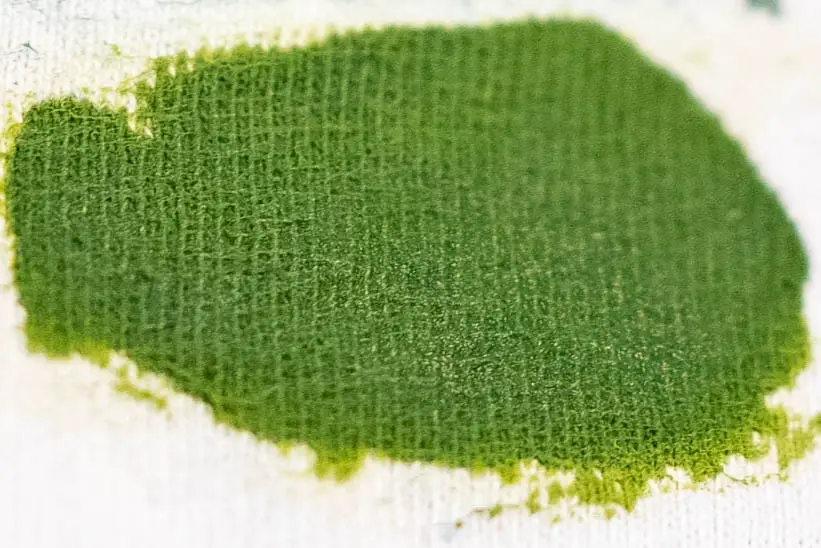
Jacquard Textile Color
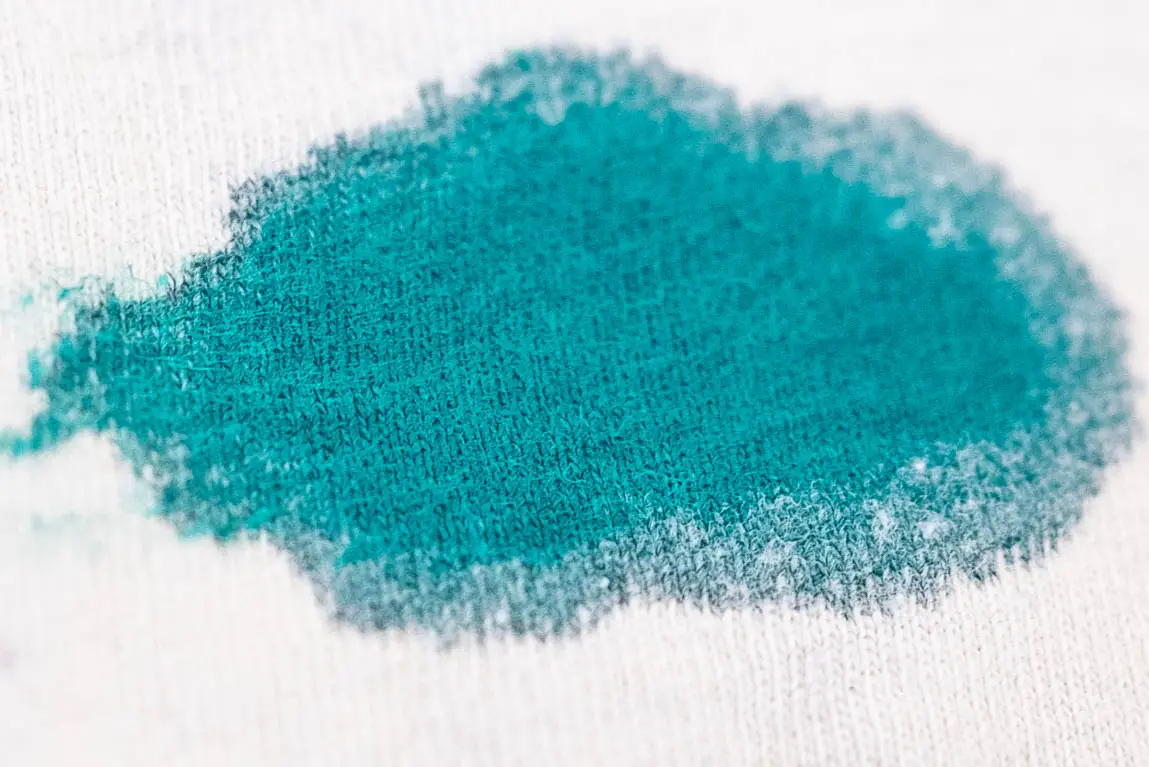
Jacquard Dye-Na-Flow
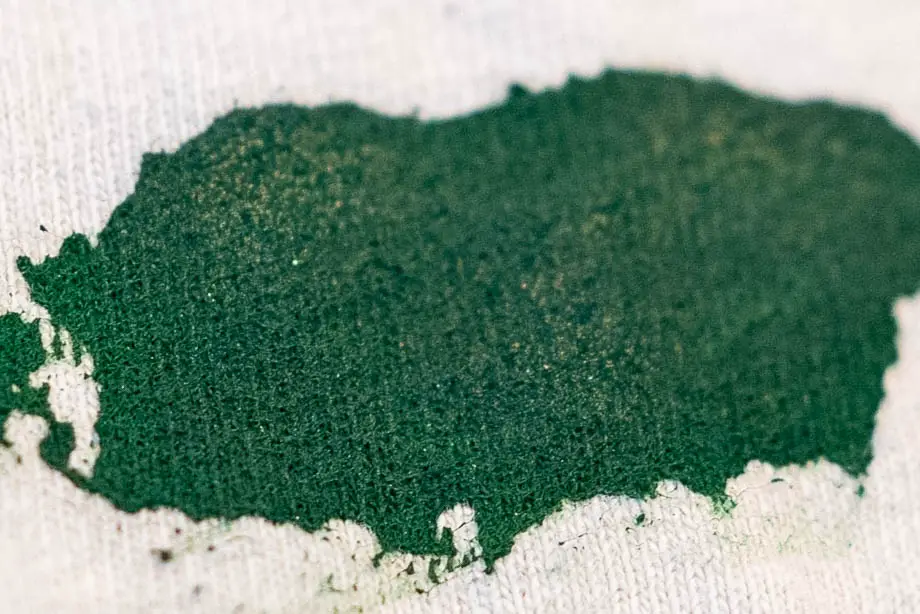
Jacquard Neopaque
And then there were the Jacquard paints – sometimes making the extra effort to pick up a professional product is really worth it, and that’s exactly what happened in this case.
If I was going for an ink-like wash of color, I would absolutely use the Dye-Na-Flow. It acted exactly as ink would, and spread very easily.
If I was going for an opaque look, I’d go with either the Jacquard Textile Color or Dye-Na-Flow. Since I tested these on a white piece of fabric, they appeared pretty similar, but I’d bet on a darker fabric, the difference would be pretty obvious.
| Fabric Paint Brand | Wash Type | Swatch Features | Color Location Within Fabric | Texture After It Dried | Price |
|---|---|---|---|---|---|
| imagin8 Fabric Paint | Washable (Doesn’t Specify if Hand Wash or Machine Wash) | Sparkly (though it wasn’t marked as such on the bottle) | On Top | Slight texture change, kind of like oiled canvas | $2.30, or $2.30/oz |
| Fabric Creations Plush 3-D Fabric Paint | Hand Wash Cold | Very Thick | On Top | Very plastic-y | $5.99 or $3.00/oz |
| Fabric Creations Soft Fabric Ink | Hand Wash Cold | Ink-Like, Didn’t Spread Well | Soaked Through | No texture change – felt like the original cotton | $3.99 or $2.00/oz |
| Tulip Slick Dimensional Fabric Paint | Machine Washable | Very Streaky, Semi-Transparent | On Top | Slight texture change, kind of like oiled canvas | $4.99 or $1.25/oz |
| Tulip Puffy Dimensional Fabric Paint | Machine Washable | Spread Evenly | On Top | Slight texture change, kind of like oiled canvas | $4.99 or $1.25/oz |
| Craft Smart Matte Acrylic Paint + Textile Medium | Machine Washable | Changed The Texture of the Fabric | On Top | Very slight texture change, felt like a thicker version of the original cotton | $0.79 + $8.49 |
| Jacquard Textile Color | Machine Washable | Very even coverage that didn’t budge | Soaked Through* | No texture change – felt like the original cotton | $3.68 or $1.64/oz |
| Jacquard Dye-Na-Flow | Machine or Hand Wash in Cool Water | Very ink-like, spreading away gradually from the initial bead of paint | Soaked Through | No texture change – felt like the original cotton | $4.99 or $2.22/oz |
| Jacquard Neopaque | Machine Washable | Very opaque, nice texture | Soaked Through* | Slight texture change, kind of like oiled canvas | $5.05, or $2.24/oz |
* These were VERY thin formulations compared to the other fabric paints I had on hand. Though the paint soaked through, the texture of the fabric didn’t really change, which makes me think the color actually sat on top of the fabric rather than penetrating deep into the fibers
I was actually pretty surprised at the price differences – I thought the Jacquard paints would come out more expensive because they’re a specialty company, but they’re actually right in the same price category. The only difference is where I bought them – everything that wasn’t Jacquard was purchased at Michaels, and all of the Jacquard products were purchased at my local professional art store.
If you’re not close to a pro art store but have access to Michaels, go ahead and purchase one of Michael’s brands! But if you’re anywhere near an art store that stocks Jacquard, I would definitely go with them.
Texture Differences
This is something I was definitely not expecting during my tests – just how different each of the textures of the finished fabric paints were. They ranged from not changing the fabric’s feel at all to feeling completely plastic-coated.
If you were to use these fabric paints on a non-cushy item, I think some of the more plastic-y paints could work well, but I could never imagine sitting comfortably on an item coated in that texture.
Overall, if you’re going to be using fabric paint on upholstery, I’d stay away from anything with the word ‘dimensional’, ‘3-D’, etc., and instead go for one of the more ink-like budget-friendly options, or a higher-end option like Jacquard’s products.
A Note About Natural Fibers and Synthetics
Not all fabric paints are well-suited for both natural fibers and synthetics. Nearly all-natural fibers (cotton, wool, silk, etc) are pretty easy to dye, but synthetics tend to be a lot harder. You’ve probably experienced this if you’ve ever tie-dyed a t-shirt, and while the cotton of the shirt changed colors, some of the synthetic thread in the stitching stayed white.
Because there are so many different kinds of fabric, you’ll want to test your paint of choice in a small, inconspicuous area before you start the whole project to make sure things adhere well.

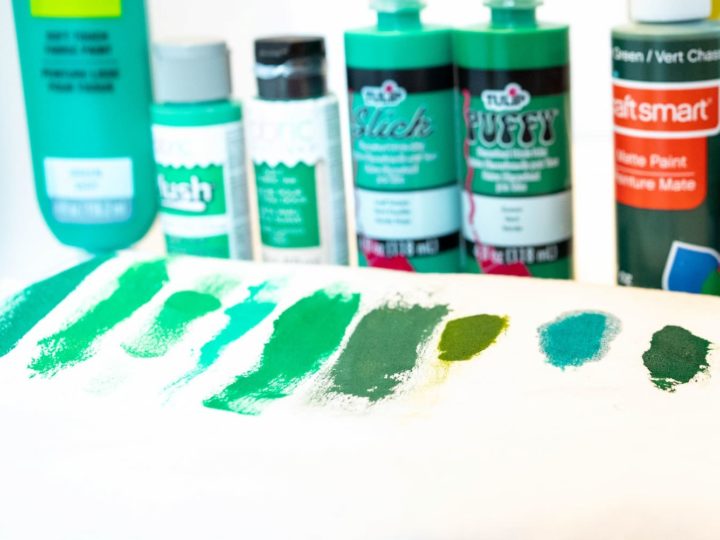
Cat
Saturday 24th of August 2024
Can I get a pdf of this article? Very difficult to read with the hu dress of ads.